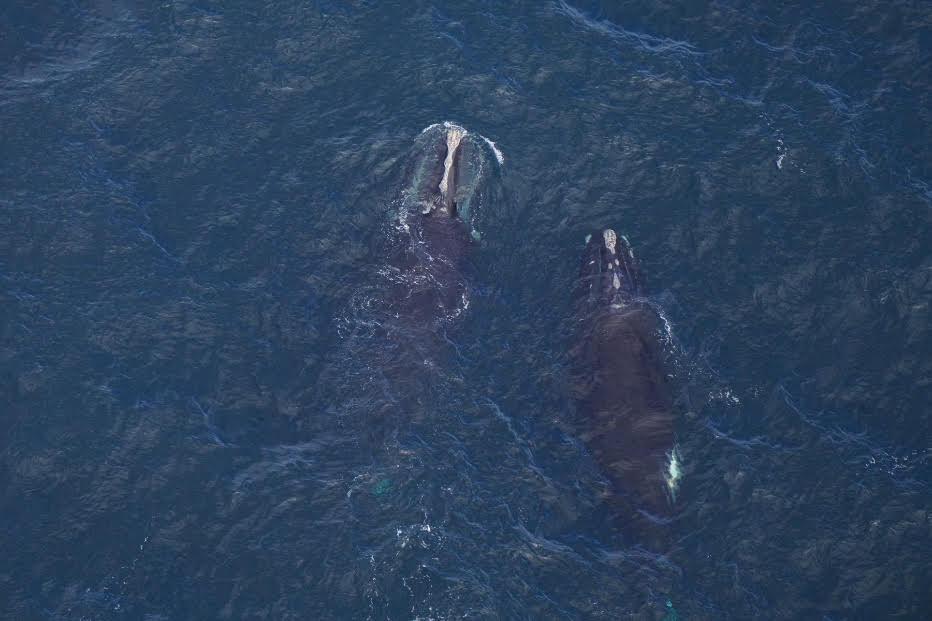
Off Massachusetts coast, dozens of North Atlantic right whales unexpectedly spotted in shipping lanes
Dozens of North Atlantic right whales have been unexpectedly spotted in shipping lanes off the Bay State coast during winter, as researchers urge mariners to slow down near the critically endangered species.
A New England Aquarium aerial survey team recently counted 31 North Atlantic right whales in shipping lanes east of Nantucket.
The aerial survey plane was flying over the Great South Channel last week when Aquarium scientists spotted a group of right whales surface feeding about 35 miles east of Nantucket.
Then about four hours later, a second group of right whales was seen 20 miles east of Chatham, which included a surface active group. Over the course of the six-hour flight, 31 individual right whales were identified in the area — which overlaps with shipping lanes into and out of Boston.
One of these right whales was an adult female named “Caterpillar.” The whale’s name comes from a large scar on her back that she received as a result of a vessel strike seven years ago.
“Right whales only surface feed under specific conditions, so we felt really lucky to document them this winter,” said Katherine McKenna, assistant research scientist in the Anderson Cabot Center for Ocean Life at the New England Aquarium.
“Many of the whales identified so far are adults, including several calving females who have given birth in recent years,” added McKenna, who was aboard the flight.
Related Articles
Cape Cod shark researchers share ‘incredible’ video footage from the view of a 3,000-pound great white
Sharks scavenge carcass of North Atlantic right whale with ties to Cape Cod
Shark sightings across New England: Where were the great white shark hotspots last year?
Deadly shark bites have jumped: Where did the most shark bites happen in the US?
The first-ever newborn great white shark sighting? ‘One of the holy grails of shark science’
Last week’s whale sightings triggered NOAA to extend a voluntary slow speed zone — called a Dynamic Management Area (DMA) — for mariners to reduce their speed to 10 knots to protect the whales. The DMA is in effect until March 7, one of several active voluntary slow zones from Maine to Virginia due to right whale sightings.
These protections come amid the recent loss of two female right whales — one found off of Georgia after being struck by a vessel.
The aggregation of whales in the Great South Channel was unexpected for this time of year.
“We know a lot about right whales, but they still surprise us all the time,” said Orla O’Brien, an associate research scientist in the Aquarium’s Anderson Cabot Center who leads the aerial survey team.
“While historically the Great South Channel has been a hotspot for feeding whales, it is unusual to see them there during the winter,” O’Brien added. “That makes the work of aerial surveys important in documenting this sighting, especially as the whales are surface feeding in the middle of a shipping lane.”
Researchers estimate that the North Atlantic right whale population is less than 360 individuals.


